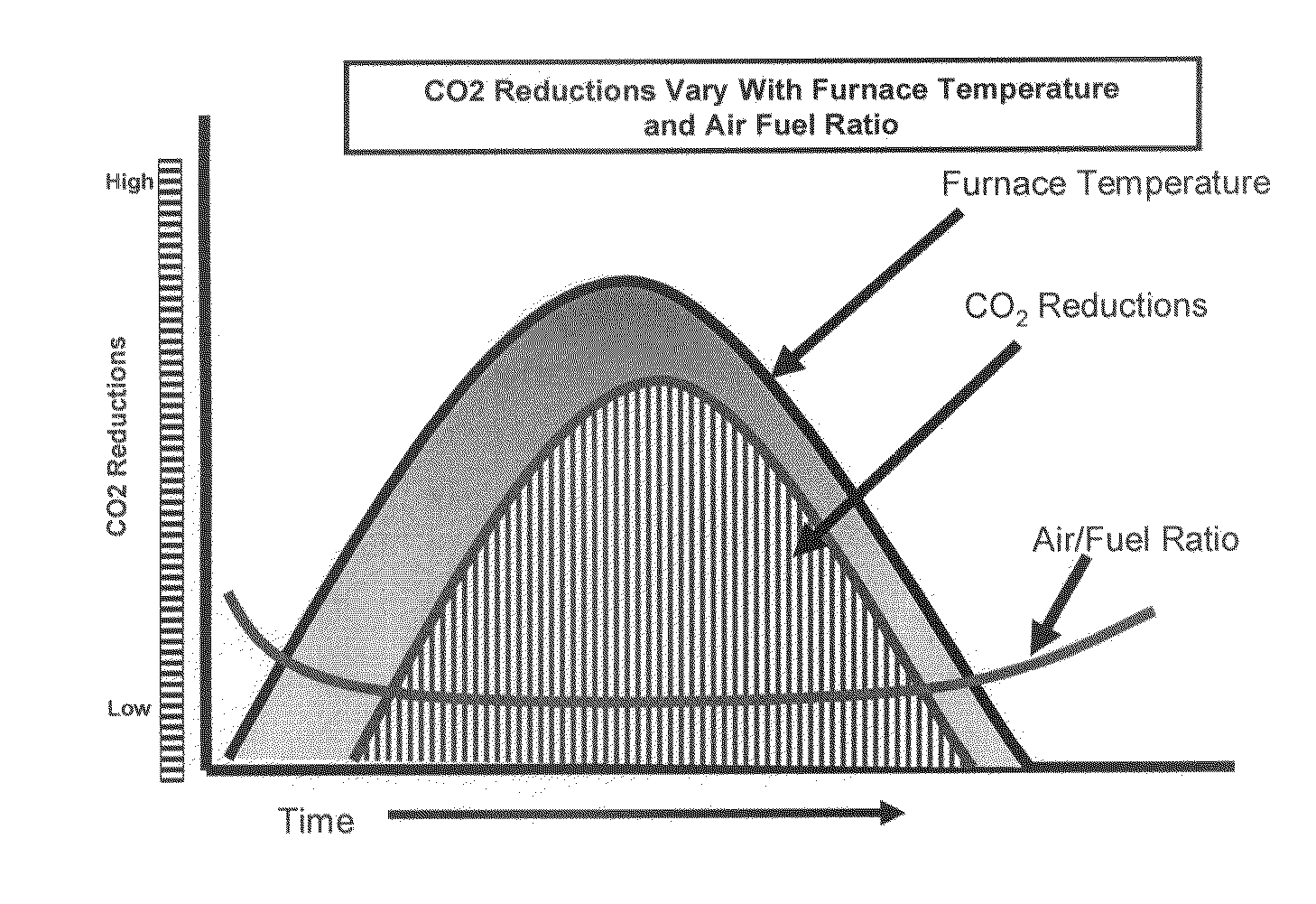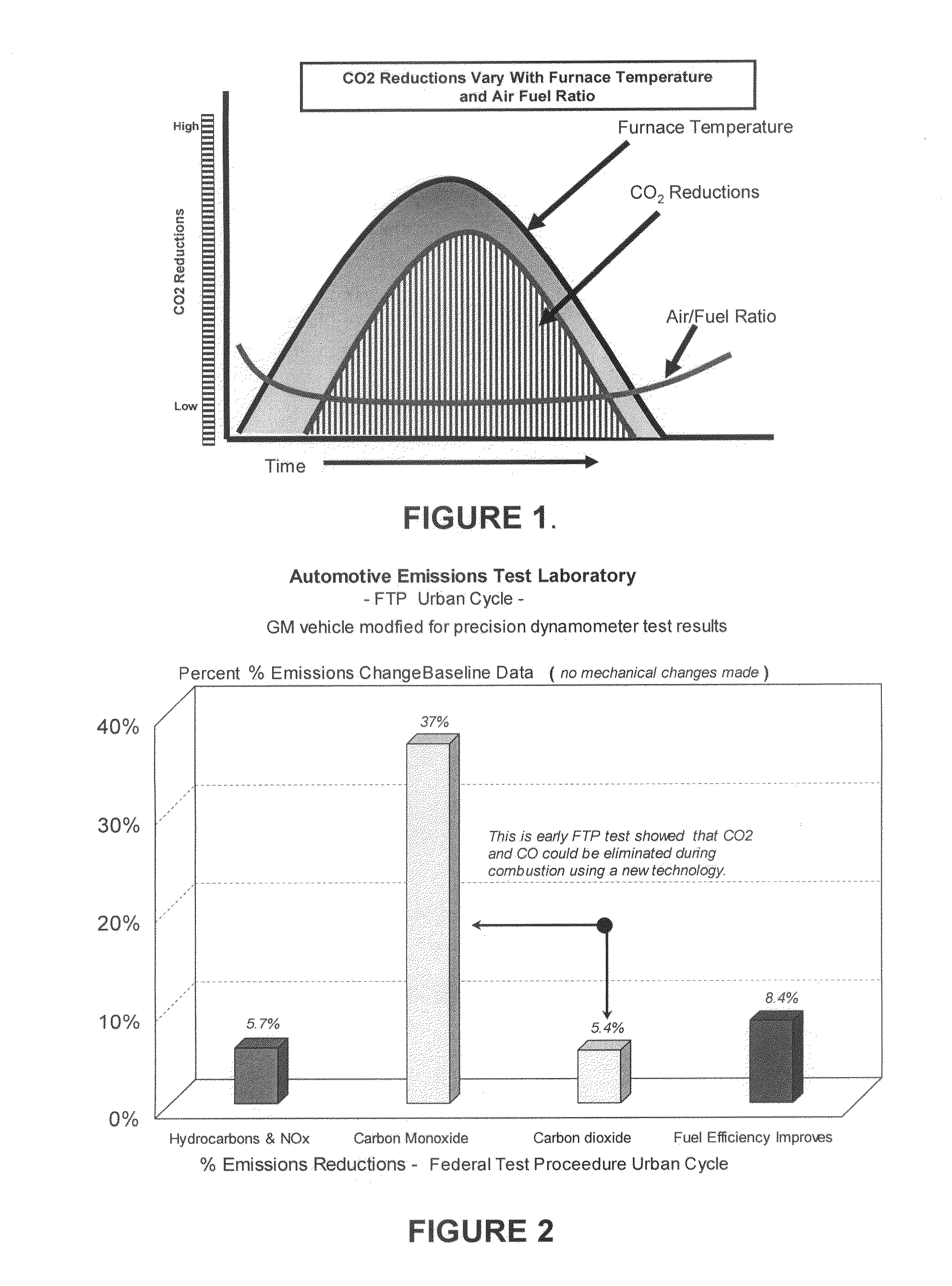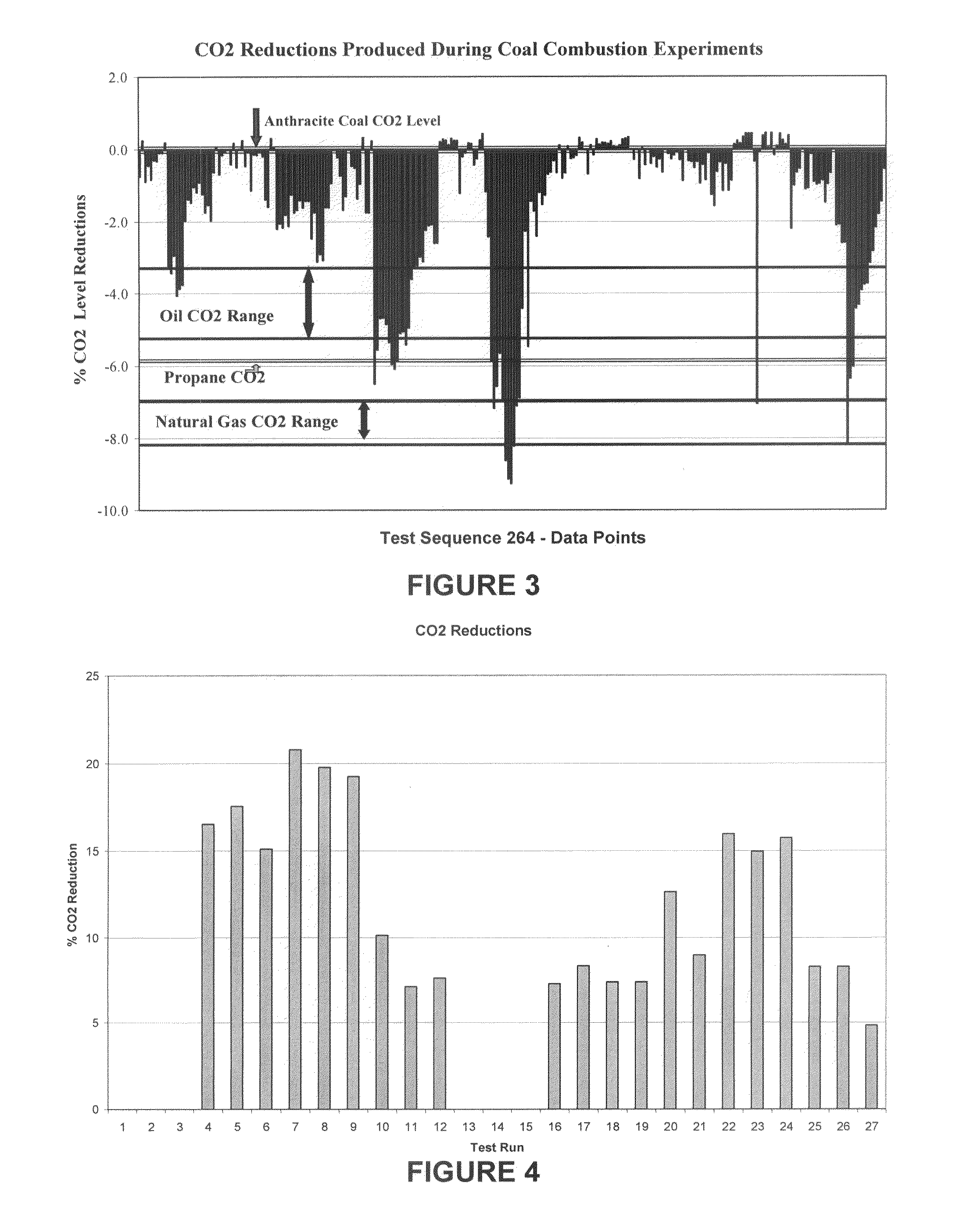Process for high efficiency, low pollution fuel conversion
a technology of high efficiency and low pollution, applied in the direction of combustion type, combustion using catalytic materials, emission prevention, etc., can solve the problems of high cost, high cost, and potential danger of the principal method being considered, so as to reduce co2 and other air pollution levels, reduce carbon dioxide, and increase thermal efficiency
- Summary
- Abstract
- Description
- Claims
- Application Information
AI Technical Summary
Benefits of technology
Problems solved by technology
Method used
Image
Examples
example 1
[0115]Two vehicles, one a diesel powered farm tractor and the second a gasoline powered pick-up truck were tested using the process. For the gasoline powered Dodge pickup truck, a mix of 3.3 milliliters per gallon of gasoline was used. The isopropyl additive mix, contained 30 grams of lithium nitrate per gallon. This was poured straight into the fuel tank. The gas powered light truck first produced a drop in CO2 of 52%, and then it went to a 93% after accumulating about 50 road miles. The exhaust gas samples were measured near the engine exhaust before the catalytic converter. For the diesel tractor, a mix of 5 milliliters per gallon of diesel was used from the same isopropyl additive mix containing 30 grams of lithium nitrate per gallon. This was also poured straight into the fuel tank. Exhaust gas samples were drawn directly from the engine exhaust. The diesel engine's CO2 level dropped by 94% from baseline tests after catalyst treatment after running for about an hour. Gas sample...
example 2
[0116]A 5 month test was conducted on a natural gas fired boiler rated at 12 million BTUs per hour which providing steam for utilities service at a UC Irvine. The lithium nitrate in this case was mixed in water and fed into the gas burner using a humidification system with an average concentration of the lithium nitrate to the average natural gas burn of 5 parts per million. A series of 7 analysis towards the end of this testing period indicated CO2 averaging 73% below theoretical. The plant installed oxygen analyzer; a portable Combustion Analyzer and a set of absorption chemical CO2 instruments were used for the test. In one case, at a constant 2.2% oxygen reading, the theoretical % CO2 for natural gas should have had a corresponding value of 12%, but the actual value of CO2 averaged a much lower 3.13% indicating the drop in CO2 of 73%.
example 3
[0117]Drop-tube combustion testing of coal samples using a target concentration for the catalyst of 5 parts per million using a water mix dripped coal samples provided the follow results:[0118]Carbon Dioxide (CO2) reductions of 30% and 53%[0119]Nitrous Oxide (NO) reductions of 58% and 77%[0120]Sulfur Oxide (SOx) reductions of 8% and 40%
PUM
 Login to View More
Login to View More Abstract
Description
Claims
Application Information
 Login to View More
Login to View More - R&D
- Intellectual Property
- Life Sciences
- Materials
- Tech Scout
- Unparalleled Data Quality
- Higher Quality Content
- 60% Fewer Hallucinations
Browse by: Latest US Patents, China's latest patents, Technical Efficacy Thesaurus, Application Domain, Technology Topic, Popular Technical Reports.
© 2025 PatSnap. All rights reserved.Legal|Privacy policy|Modern Slavery Act Transparency Statement|Sitemap|About US| Contact US: help@patsnap.com



